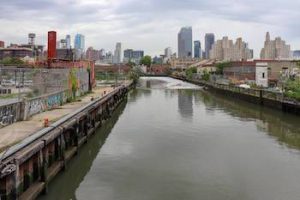Local Environmental & Climate Justice Organizations

NY Renews, with more than 300 member environmental, justice, faith, labor, and community groups state-wide, works in Albany to promote policies that promote the transition to a green economy, stimulate good green jobs, protect vulnerable communities disproportionately hurt by the climate crisis, and protect workers and their families.
New Yorkers for Clean Power is a statewide collaborative campaign to rapidly shift to a clean energy economy. Through education, advocacy and organizing, the campaign engages the public, local governments and businesses to advance a range of renewable energy, energy efficiency, heat pumps and clean transportation solutions.
SANE Energy Project, founded in 2011, has a mission to push for a rapid and just transition to 100% community-controlled renewable energy in New York State. SANE Energy builds every campaign through a lens of racial, social, and economic justice.
GrowNYC was created in 1970, emerging from the spirit of the first Earth Day. Formerly the Council on the Environment of New York City, the organization originally focused on policy and writing comprehensive reports about quality of healthy lifestyle issues like air, traffic, and noise pollution. The organization now works to improve New York City’s quality of life through environmental programs that transform communities block by block and empower New Yorkers to secure a clean and healthy environment for future generations.
The New York City Environmental Justice Alliance is a nonprofit citywide membership network linking grassroots organizations from low-income neighborhoods and communities of color in their struggle for environmental justice. NYC-EJA empowers its member organizations to advocate for improved environmental conditions, and against inequitable environmental burdens, through campaigns designed to inform city and state policies.
The New York Energy Democracy Alliance is a statewide alliance of community-based organizations, grassroots groups, and policy experts working together to advance a just and participatory transition to a resilient, localized, and democratically controlled clean energy economy in New York State.
The Brooklyn Movement Center is a membership-led, direct-action, community organization based in Bed-Stuy and Crown Heights. BMC mobilizes community members to obtain concrete improvement in their lives by identifying social, economic, and environmental issues of critical importance, and acquiring the information and leadership skills necessary to transform their community’s local conditions. BMC operates The Central Brooklyn Food Co-op that is 100% member-owned and operated, with membership open to all. Their mission is to utilize collective strength to ensure access to affordable and fresh food within the mostly-of-color, low- and moderate-income communities of Central Brooklyn.
The Gowanus Canal Conservancy promotes the development of a resilient, vibrant, open space network through community stewardship of the Gowanus Watershed. Since 2006, GCC has led grassroots volunteer projects, educated students on environmental issues, and worked with agencies, elected officials, and the community to advocate for, build, and maintain innovative green infrastructure around the Gowanus Canal.
The Greenpoint Community Environmental Fund is a joint program between the New York State Office of the Attorney General and Department of Environmental Conservation working to enhance environmental conservation programs in Greenpoint. These projects are meant to build, improve and rehabilitate open space, waterfronts, green buildings, infrastructure, and neighborhoods, while promoting environmental education and stewardship. This grant program was created by monies obtained through a settlement with ExxonMobil over its Greenpoint oil spill.
UPROSE is Brooklyn’s oldest Latino community-based organization, promoting sustainability and resiliency in Sunset Park through organizing, education, indigenous and youth leadership development, and cultural and artistic expression. Since 2009, they have been spearheading a Vision Plan for Sunset Park’s waterfront district, already a major contributor to NYC’s industrial sector, to be redeveloped as a prime destination for environmentally-sustainable industry. Plus, they’ve developed Sunset Park Solar, the city’s first cooperatively-owned community solar project built on the Brooklyn Army Terminal rooftop!
350Brooklyn is among the many organizations in New York City and New York State working on solutions to the climate crisis that can be done right here. We are volunteer-driven, mobilizing hundreds of Brooklynites to take effective action that will lead to a more just and equitable world where all beings can thrive. We proudly partner with many of the organizations on this list.



